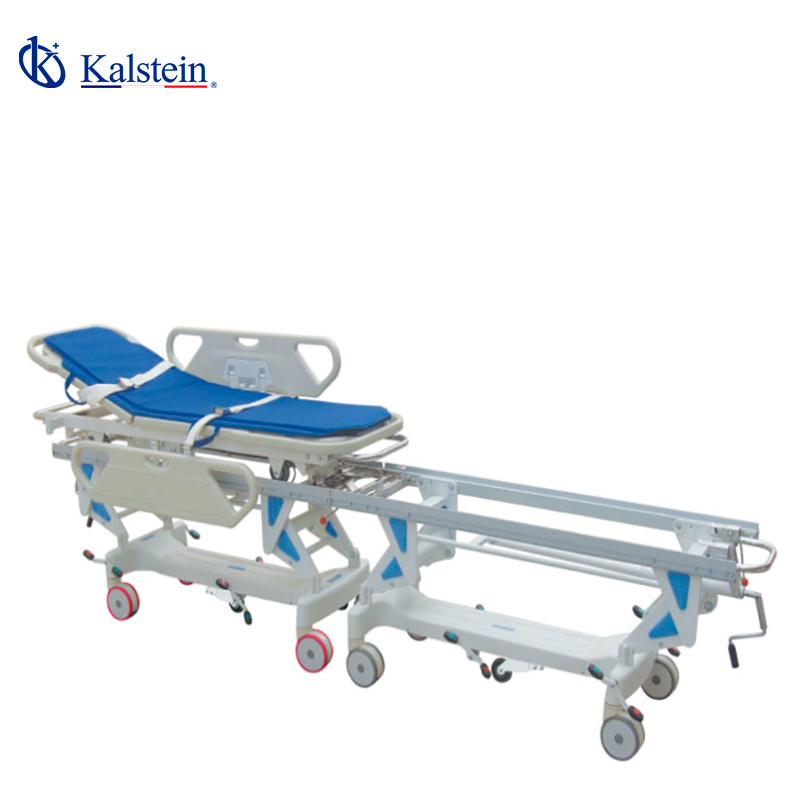Transport stretchers are essential in any medical institution, facilitating the safe and efficient movement of patients within the facility.
Medical innovation has allowed modern transport stretchers to incorporate advanced features to enhance patient comfort and staff efficiency. In this article, we will explore the benefits and unique characteristics of transport stretchers and how they address specific problems for users.
We understand that you need equipment that delivers maximum value to your laboratory. We invite you to visit https://kalstein.pl/category-product/medical-line/medical-transfer-stretcher/, to immerse yourself in our universe of cutting-edge technology equipment. Our prices are competitive and accessible, we combine the convenience of online shopping with the guarantee of an exceptional product. Because you deserve the best, we create and offer top-tier laboratory equipment. Make your choice today, where science comes to life. https://kalstein.pl/
Medical Innovation in Transport Stretcher Design
Medical innovation has transformed the design of transport stretchers, making them safer and more functional. Current stretchers are designed with lightweight yet durable materials, such as aluminum and high-durability polymers, which make them easy to maneuver without compromising sturdiness. This advancement is crucial for medical institutions that require durable and easy-to-handle equipment.
Furthermore, many transport stretchers now include advanced cushioning systems that improve patient comfort during transport. These systems reduce vibrations and sudden movements, minimizing stress and pain for the patient. Medical research supports the importance of these systems, as they contribute to a better patient experience and quicker recovery.
Ergonomic Features for Medical Staff
Modern transport stretchers are not only designed for patient comfort but also for the ergonomics of medical staff. Adjustable features, such as height regulation and reclining backrests, allow medical professionals to adjust the stretcher to their needs, reducing the risk of work-related injuries. These features are particularly important in emergency situations, where time and efficiency are critical.
Additionally, multidirectional wheels and high-security brakes ensure that the stretcher can be moved precisely and stopped firmly when necessary. This is essential in hospital environments, where narrow corridors and tight corners can make moving large equipment challenging. Improved ergonomics for medical staff not only enhance patient safety but also increase work efficiency.
Benefits of Transport Stretchers in Emergency Situations
In emergency situations, time is critical, and transport stretchers can make the difference between life and death. Stretchers designed for emergencies are equipped with features such as quick lift systems and easy access to essential medical equipment. This allows medical staff to provide immediate and effective care, even while transporting the patient.
Moreover, the ability to quickly adjust the patient’s position is vital in emergencies. Modern transport stretchers allow for rapid and secure inclinations, facilitating procedures such as cardiopulmonary resuscitation (CPR) without having to move the patient to another surface. These features significantly improve response in critical situations, leading to better patient outcomes.
Specific Solutions for Critical Patient Care
Transport stretchers are particularly important in the care of critical patients, where every movement must be carefully controlled to avoid further complications. Stretchers designed for this purpose often include integrated monitoring systems, such as supports for cardiac and respiratory monitors, which allow continuous patient supervision during transport.
These stretchers also have robust structures capable of supporting additional medical equipment, such as ventilators and infusion pumps. This is essential to maintain patient stability during transfers between different hospital units, such as the emergency room and the intensive care unit. The ability to transport the patient along with all their life-support equipment reduces the risk of interruptions in medical care.
Impact on Medical Research and Development of New Technologies
The development of advanced transport stretchers also has a significant impact on medical research. The integration of new technologies, such as monitoring sensors and antimicrobial materials, is being studied and applied to improve the safety and efficiency of these devices. These innovations not only benefit current patients but also open new opportunities for the development of future medical technologies.
Research into antimicrobial materials, for example, aims to reduce the risk of nosocomial infections, a common problem in hospital settings. Transport stretchers with active antimicrobial surfaces can help prevent the spread of bacteria and viruses, enhancing the safety of both patients and medical staff. This is an area of ongoing research with the potential to transform the way medical equipment is designed and used.
In conclusion, transport stretchers represent a fundamental element in modern medical care, combining innovation, ergonomics, and advanced technology to improve the patient experience and the efficiency of medical staff. Their continuous development and improvement reflect the commitment of medical research and engineering to offer increasingly effective and safe solutions in the healthcare field.

